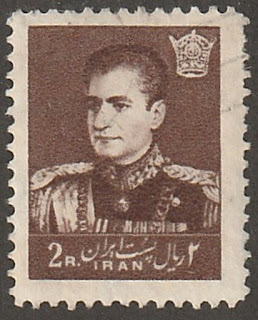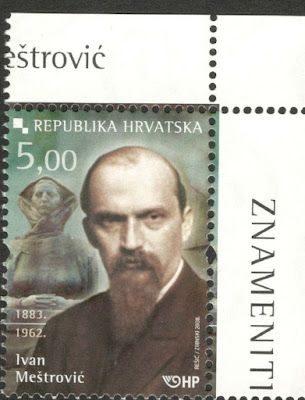1909 – Ernest Shackleton's expedition finds the magnetic South Pole
Sir Ernest Henry Shackleton (15 February 1874 – 5 January 1922) was a British Antarctic explorer who led three British expeditions to the Antarctic. He was one of the principal figures of the period known as the Heroic Age of Antarctic Exploration.
Born in Kilkea, County Kildare, Ireland, Shackleton and his Anglo-Irish family moved to Sydenham in suburban south London when he was ten. His first experience of the polar regions was as third officer on Captain Robert Falcon Scott's Discovery expedition of 1901–1904, from which he was sent home early on health grounds, after he and his companions Scott and Edward Adrian Wilson set a new southern record by marching to latitude 82°S. During the Nimrod expedition of 1907–1909, he and three companions established a new record Farthest South latitude at 88°S, only 97 geographical miles (112 statute miles or 180 kilometres) from the South Pole, the largest advance to the pole in exploration history. Also, members of his team climbed Mount Erebus, the most active Antarctic volcano. For these achievements, Shackleton was knighted by King Edward VII on his return home.
The Nimrod Expedition of 1907–09, otherwise known as the British Antarctic Expedition, was the first of three expeditions to the Antarctic led by Ernest Shackleton. Its main target, among a range of geographical and scientific objectives, was to be first to the South Pole. This was not attained, but the expedition's southern march reached a Farthest South latitude of 88° 23' S, just 97.5 nautical miles (180.6 km; 112.2 mi) from the pole. This was by far the longest southern polar journey to that date and a record convergence on either Pole. A separate group led by Welsh Australian geology professor Edgeworth David reached the estimated location of the South Magnetic Pole, and the expedition also achieved the first ascent of Mount Erebus, Antarctica's second highest volcano.
The expedition lacked governmental or institutional support, and relied on private loans and individual contributions. It was beset by financial problems and its preparations were hurried. Its ship, Nimrod, was less than half of the size of Robert Falcon Scott's 1901–04 expedition ship Discovery, and Shackleton's crew lacked relevant experience. Controversy arose from Shackleton's decision to base the expedition in McMurdo Sound, close to Scott's old headquarters, in contravention of a promise to Scott that he would not do so. Nevertheless, although the expedition's profile was initially much lower than that of Scott's six years earlier, its achievements attracted nationwide interest and made Shackleton a public hero. The scientific team, which included the future Australasian Antarctic Expedition leader Douglas Mawson, carried out extensive geological, zoological and meteorological work. Shackleton's transport arrangements, based on Manchurian ponies, motor traction, and sled dogs, were innovations which, despite limited success, were later copied by Scott for his ill-fated Terra Nova Expedition.
On his return, Shackleton overcame the Royal Geographical Society's initial scepticism about his achievements and received many public honours, including a knighthood from King Edward VII. He made little financial gain from the expedition and eventually depended on a government grant to cover its liabilities. Within three years his southernmost record had been surpassed, as first Amundsen and then Scott reached the South Pole. In his own moment of triumph, Amundsen nevertheless observed: "Sir Ernest Shackleton's name will always be written in the annals of Antarctic exploration in letters of fire".
Farthest South refers the most southerly latitude reached by explorers before the conquest of the South Pole in 1911. Significant steps on the road to the pole were the discovery of lands south of Cape Horn in 1619, Captain James Cook's crossing of the Antarctic Circle in 1773, and the earliest confirmed sightings of the Antarctic mainland in 1820. From the late 19th century onward, the quest for Farthest South latitudes became in effect a race to reach the pole, which culminated in Roald Amundsen's success in December 1911.
Stamps from Great Britain and British Antarctica depicting Shackleton and or his expedition
1979 – The last Iranian Shah flees Iran with his family for good and relocates to Egypt.
Mohammad Reza Pahlavi (26 October 1919 – 27 July 1980), also known as Mohammad Reza Shah, was the last King (Shah) of Iran from 16 September 1941 until his overthrow by the Iranian Revolution on 11 February 1979. Mohammad Reza Shah took the title Shahanshah ("King of Kings") on 26 October 1967. He was the second and last monarch of the House of Pahlavi. Mohammad Reza Shah Pahlavi held several other titles, including that of Aryamehr ("Light of the Aryans") and Bozorg Arteshtaran ("Commander-in-Chief"). His dream of what he referred to as a "Great Civilisation" in Iran led to a rapid industrial and military modernisation, as well as economic and social reforms.
Mohammad Reza came to power during World War II after an Anglo-Soviet invasion forced the abdication of his father, Reza Shah Pahlavi. During Mohammad Reza's reign, the British owned oil industry was briefly nationalised, under Prime Minister Mohammad Mosaddegh, until a UK and US -backed coup d'état deposed Mosaddegh and brought back foreign oil firms under the Consortium Agreement of 1954. Under Mohammad Reza's reign, Iran marked the anniversary of 2,500 years of continuous Persian monarchy since the founding of the Achaemenid Empire by Cyrus the Great – concurrent with this celebration, Mohammad Reza changed the benchmark of the Iranian calendar from the hegira to the beginning of the First Persian Empire, measured from Cyrus the Great's coronation. Mohammad Reza also introduced the White Revolution, a series of economic, social and political reforms with the proclaimed intention of transforming Iran into a global power and modernising the nation by nationalising certain industries and granting women suffrage.
Mohammad Reza gradually lost support from the Shi'a clergy of Iran as well as the working class, particularly due to his strong policy of modernisation, laïcité, conflict with the traditional class of wealthy merchants known as bazaaris, relations with Israel, and corruption issues surrounding himself and the royal family, and the ruling elite. Various additional controversial policies were enacted, including the banning of Communism and Marxism–Leninism including the Tudeh Party and a general suppression of political dissent by Iran's intelligence agency, SAVAK. According to official statistics, Iran had as many as 2,200 political prisoners in 1978, a number which multiplied rapidly as a result of the revolution.
Several other factors contributed to strong opposition to the Shah amongst certain groups within Iran, the most significant of which were US and UK support for his regime, and clashes with leftists and Islamists. By 1979, political unrest had transformed into a revolution which, on 17 January, forced him to leave Iran. Soon thereafter, the Iranian monarchy was formally abolished, and Iran was declared an Islamic republic led by Ruhollah Khomeini (known in the West as Ayatollah Khomeini). Facing likely execution should he return to Iran, he died in exile in Egypt, whose president, Anwar Sadat, had granted him asylum. Due to his status as the last Shah of Iran, he is often known as simply "The Shah".
1962 Died: Ivan Meštrović, Croatian sculptor and architect, designed the Monument to the Unknown Hero (b. 1883)
Ivan Meštrović (15 August 1883 – 16 January 1962) was a renowned Yugoslavian and Croatian sculptor, architect and writer of the 20th century.
He was the most prominent sculptor of Croatian modern sculpture and a leading personality of artistic life in Zagreb. He studied at the Pavle Bilinić's Stone Workshop in Split and at the Academy of Fine Arts Vienna, where he was formed under the influence of the Secession. He traveled throughout Europe and studied the works of ancient and Renaissance masters, especially Michelangelo, and French sculptors A. Rodin, A. Bourdelle and A. Maillola. He was the initiator of the national-romantic group Medulić (he advocated the creation of art of national features inspired by the heroic folk songs). During the First World War, he lived in emigration. After the war, he returned to Croatia and began a long and fruitful period of sculpture and pedagogical work. In 1942 he emigrated to Italy, in 1943 to Switzerland and in 1947 to the United States. He was a professor of sculpture at the Syracuse University and from 1955 at the University of Notre Dame in South Bend, Indiana.
Most of his early works of symbolic themes were formed in the spirit of the Secession, some of which, like the Well of Life, show impressionist restless surfaces created under the influence of Rodin's naturalism, and the second, reviving national myth, become stylized monumental plastics (Kosovo cycle, 1908-1910). Before the First World War, he left pathetic epic stylization, expressing increasingly emotional states, as evidenced by the wooden reliefs of biblical themes made in a combination of Archaic, Gothic, Secessionist and Expressionist styles. During the 1920s and 1930s, the classical component prevailed in his works. In this period, he created a number of public monuments of strong plastic expression, pronounced and legible shapes (Grgur Ninski and Marko Marulić in Split, Andrija Medulić, Andrija Kačić-Miošić and Josip Juraj Strossmayer in Zagreb, The Bowman and The Spearman in Chicago). Portraits take a special place in his opus.
Meštrović achieved works of strong plastic value in the construction-sculptural monuments and projects, mostly with central layout (the Mausoleum of the Račić family in Cavtat, the Mausoleum of the Meštrović family in Otavice, the Meštrović Pavilion in Zagreb, Monument to the Unknown Hero in Belgrade). He also designed a memorial church of King Zvonimir in Biskupija near Knin inspired by old Croatian churches, a representative family palace, today the Ivan Meštrović Gallery, and reconstructed renaissance fortified mansion Crikvine-Kaštilac in Split.






No comments:
Post a Comment